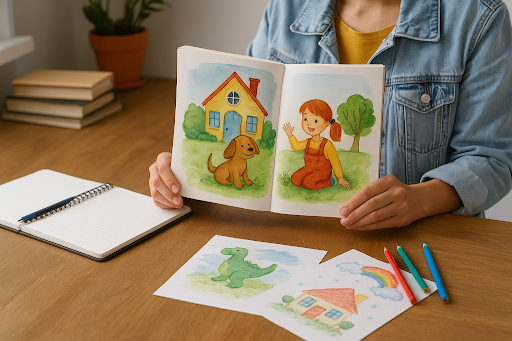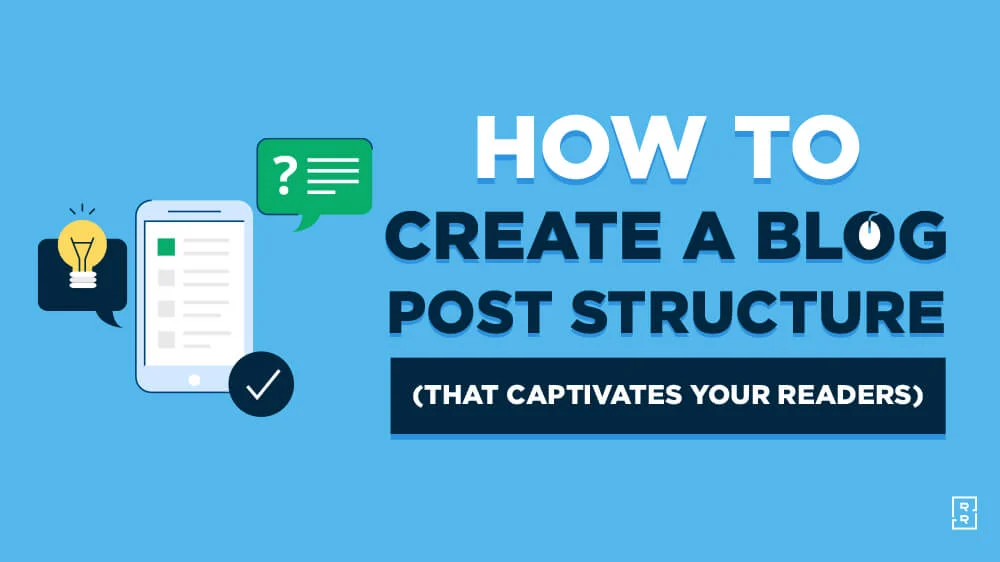Education
Consistency In Spanish: What It Is And How To Achieve It

Learning Spanish can be a daunting task, especially when you consider the fact that there are over 400 million Spanish speakers in the world. However, one of the most important factors that will help you master the language is consistency. In this article, we will explore what Consistency In Spanish means, how it works, and provide tips on how to achieve it.
What Is Consistency In Spanish?
Consistency in Spanish refers to the practice of regularly engaging in activities that help you improve your Spanish skills. This means setting aside time every day or every week to study, practice speaking, and listen to Spanish. Consistency is the key to developing fluency and being able to communicate effectively with native speakers.
How Does Consistency Work In Spanish Learning?
Consistency works by creating a routine that allows you to immerse yourself in the language. By making a habit of studying and practicing every day, you will begin to internalize the grammar rules, vocabulary, and pronunciation. You will also become more comfortable with the language and gain confidence in your ability to communicate effectively.
Tips For Achieving Consistency In Spanish Learning
Set Realistic Goals
Don’t aim to become fluent in a month or even a year. Instead, set small, achievable goals that you can reach in a shorter amount of time. For example, aim to learn 10 new vocabulary words every day or practice conjugating a new verb tense each week.
Practice Every Day
Make it a habit to practice your Spanish skills every day, even if it’s just for a few minutes. Consistency is key, and even short practice sessions can help you make progress. Try to incorporate Spanish into your daily routine, such as listening to Spanish music or podcasts during your commute, or watching Spanish-language TV shows.
Find A Study Partner
Find someone who is also learning Spanish and practice speaking with them regularly. You can also practice writing and correcting each other’s work.
Take Advantage Of Technology
There are many apps and online resources available that can help you Learn Spanish. Duolingo, Memrise, and Rosetta Stone are just a few examples of language-learning apps that you can use to practice vocabulary, grammar, and pronunciation. You can also use language exchange websites to find conversation partners.
Immerse Yourself In The Language
Immersing yourself in the language is one of the best ways to improve your skills. If possible, travel to a Spanish-speaking country and practice speaking with native speakers. If traveling isn’t an option, try to find opportunities to speak Spanish with native speakers in your local community.
Join A Language School Or Program
Joining a language school or program can provide structure and accountability to your Spanish learning. IMAC Spanish Language Programs, for example, offers courses for all levels of Spanish learners and provides a supportive and immersive learning environment.
Examples Of Consistency In Action
Consistency is the key to success in any endeavor, and learning Spanish is no exception. Here are a few examples of how consistency can help you improve your Spanish skills:
If you commit to learning 10 new vocabulary words every day, you will have learned 3,650 new words in a year.
If you practice conjugating a new verb tense each week, you will have mastered 52 verb tenses in a year.
If you make it a habit to listen to Spanish music or podcasts during your daily commute, you will have accumulated many hours of exposure to the language by the end of the year.
Conclusion:
consistency is the key to mastering Spanish. By incorporating regular practice and study into your daily routine, you can improve your vocabulary, grammar, and pronunciation, and gain the confidence you need to communicate effectively with native speakers. Setting realistic goals, finding a study partner, taking advantage of technology, immersing yourself in the language, and joining a language school or program are all effective ways to achieve consistency in your Spanish learning journey. Remember, every small step counts, and with dedication and persistence, you can achieve fluency in Spanish.
Education
NIV vs NLT: Which Bible Translation Is Right for You?

Introduction
Choosing the right Bible translation can feel overwhelming with dozens of options available. Two of the most popular modern translations are the New International Version (NIV) and the New Living Translation (NLT). Both aim to make Scripture accessible to contemporary readers, but they take different approaches to achieve this goal.
The niv vs nlt seeks to balance accuracy with readability through a thought-for-thought translation method. Meanwhile, the NLT prioritizes clarity and natural expression, often paraphrasing complex passages to ensure understanding. Each version serves different purposes and audiences, making the choice between them an important consideration for your Bible study journey.
Understanding the strengths and characteristics of each translation will help you make an informed decision that aligns with your reading goals, whether you’re new to Scripture or deepening your theological study.
History and Translation Philosophy
The New International Version (NIV)
The NIV project began in 1965 when the Christian Reformed Church and National Association of Evangelicals recognized the need for a contemporary English Bible translation. Over 100 scholars from various denominations and countries worked for more than a decade to complete the original NIV, published in 1978.
The translation committee employed dynamic equivalence, also called thought-for-thought translation. This approach focuses on conveying the meaning and intent of the original text rather than providing word-for-word translations. The scholars aimed to create a Bible that maintained theological accuracy while using natural, contemporary English.
The NIV underwent a major revision in 2011, incorporating advances in biblical scholarship and archaeological discoveries. This updated version also addressed concerns about gender-inclusive language where appropriate to the original text.
The New Living Translation (NLT)
The NLT has its roots in The Living Bible, a paraphrase created by Kenneth Taylor in 1971. However, the NLT represents a complete retranslation from the original Hebrew, Aramaic, and Greek texts rather than a revision of Taylor’s work.
Published in 1996, the NLT was created by a team of 90 Bible scholars who prioritized clarity and readability above all else. The translation philosophy leans heavily toward dynamic equivalence, sometimes crossing into paraphrase territory to ensure modern readers can easily understand the text.
The NLT team focused on producing a Bible that reads naturally in English, even if it meant departing significantly from the structure and phrasing of the original languages. A second edition was released in 2004, and further updates have continued to refine the translation.
Accuracy and Readability
NIV: Balancing Precision and Accessibility
The NIV maintains a strong commitment to accuracy while making the text accessible to modern readers. Translators carefully considered manuscript evidence and consulted leading biblical scholars to ensure theological precision. The translation generally stays close to the original text structure while smoothing out passages that might confuse contemporary audiences.
Reading level assessments typically place the NIV at a 7th to 8th-grade level, making it accessible to most adults and older children. The language flows naturally without sounding overly academic or antiquated.
However, some critics argue that the NIV occasionally sacrifices precision for readability. Certain theological terms are simplified or explained rather than translated directly, which can sometimes obscure nuances present in the original languages.
NLT: Prioritizing Understanding
The NLT excels in readability, consistently ranking at a 6th-grade reading level. The translators made deliberate choices to explain rather than translate difficult concepts, making Scripture accessible to new believers, young readers, and those for whom English is a second language.
This approach means the NLT often provides interpretation alongside translation. Complex theological concepts are explained in simple terms, and cultural references are clarified for modern readers. While this enhances understanding, it also means readers receive the translators’ interpretation rather than wrestling with the text themselves.
The NLT’s emphasis on clarity sometimes comes at the expense of precision. Scholars note that the translation occasionally adds words or concepts not present in the original text to aid comprehension.
Target Audience
Who Should Choose the NIV
The NIV works well for readers who want a balance between accuracy and accessibility. It’s particularly suitable for:
- People beginning serious Bible study who want to engage with the text’s complexity
- Small group leaders and Sunday school teachers who need a reliable, understandable translation
- Readers comfortable with occasional challenging passages that require further study
- Those who appreciate footnotes explaining alternative translations and textual variants
The NIV serves as an excellent bridge between highly literal translations and more paraphrastic versions. It provides enough accuracy for theological study while remaining accessible for devotional reading.
Who Should Choose the NLT
The NLT excels for readers who prioritize immediate understanding over literal precision. It’s ideal for:
- New Christians or those unfamiliar with biblical language and concepts
- Children and teenagers developing their Bible reading habits
- People who struggle with reading comprehension or have learning differences
- Those who prefer devotional reading over detailed textual analysis
The NLT removes barriers that might prevent people from engaging with Scripture. Its conversational tone and clear explanations make Bible reading feel approachable rather than intimidating.
Examples: Comparing Key Verses
Romans 12:1 – A Call to Dedication
NIV: “Therefore, I urge you, brothers and sisters, by the mercies of God, to present your bodies as a living sacrifice, holy and pleasing to God this is your true worship.”
NLT: “And so, dear brothers and sisters, I plead with you to give your bodies to God because of all he has done for you. Let them be a living and holy sacrifice the kind he will find acceptable. This is truly the way to worship him.”
The NIV maintains Paul’s formal language while making it understandable. The NLT transforms the verse into contemporary speech, explaining concepts like “mercies of God” with the phrase “because of all he has done for you.”
Ephesians 2:8-9 – Salvation by Grace
NIV: “For it is by grace you have been saved, through faith and this is not from yourselves, it is the gift of God—not by works, so that no one can boast.”
NLT: “God saved you by his grace when you believed. And you can’t take credit for this; it is a gift from God. Salvation is not a reward for the good things we have done, so none of us can boast about it.”
Both translations capture the essential meaning, but the NLT expands the text to ensure clarity. Where the NIV uses “works,” the NLT explains this as “good things we have done.”
Psalm 23:1 – The Lord as Shepherd
NIV: “The Lord is my shepherd, I lack nothing.”
NLT: “The Lord is my shepherd; I have all that I need.”
This example shows how both translations can arrive at similar conclusions through different approaches. The NIV uses more literal language while the NLT opts for a more conversational expression of the same truth.
Making Your Decision
Consider your primary purpose for Bible reading when choosing between these translations. If you’re engaged in serious study, teaching, or want to wrestle with the text’s complexities, the NIV provides better tools for deeper investigation. Its footnotes and closer adherence to original text structure support careful analysis.
If your goal is regular devotional reading, encouraging others to engage with Scripture, or helping new believers develop Bible reading habits, the NLT’s clarity and warmth make it an excellent choice. Its approachable language removes barriers that might discourage consistent reading.
Many serious Bible students use multiple translations, recognizing that each offers unique insights. The NIV and NLT can complement each other well the NIV for study and the NLT for devotional reading or sharing with others.
Frequently Asked Questions
Is the NIV or NLT more accurate?
Both translations are accurate to the original texts, but they define accuracy differently. The NIV prioritizes formal accuracy by staying closer to the original language structure. The NLT emphasizes functional accuracy by ensuring modern readers understand the intended meaning, even if the expression differs significantly from the original.
Which translation is better for memorization?
The NIV generally works better for memorization because its language is more precise and memorable. The NLT’s conversational style, while easier to understand, doesn’t always create the kind of memorable phrasing that aids memorization.
Can I use either translation for serious Bible study?
Both translations support Bible study, though in different ways. The NIV provides better tools for detailed textual analysis, while the NLT excels at making complex passages immediately understandable. Many scholars recommend using multiple translations for comprehensive study.
Which translation do most churches use?
Both translations are widely used in churches. The NIV tends to be more popular in churches that emphasize expository preaching and Bible study, while the NLT is often chosen by churches focused on reaching newcomers and making Scripture accessible.
Finding Your Perfect Bible Translation
Neither the NIV nor NLT is inherently superior they simply serve different purposes in your Bible reading journey. The NIV offers reliable accuracy with good readability, making it ideal for study and teaching. The NLT prioritizes immediate understanding and accessibility, perfect for devotional reading and outreach.
Consider starting with whichever translation draws you to read Scripture more consistently. You can always explore other translations as your knowledge and interests develop. The most important factor isn’t which translation you choose, but that you’re regularly engaging with God’s Word in a meaningful way.
Education
Top 10 Creative Children’s Book Marketing Ideas for Indie Authors

How Indie Authors Can Stand Out in the Crowded Children’s Book Market
Marketing a children’s book is an exciting yet challenging journey—especially for indie authors. With thousands of books hitting the shelves every day, it takes more than a great story and charming illustrations to stand out. That’s where creative and effective children’s book marketing comes into play.
Whether you’ve just launched your first picture book or you’re looking to boost the visibility of your self-published series, this guide provides you with ten unique marketing ideas that go beyond the basics. Let’s dive into strategies that help you connect with your young readers and their parents while growing your author brand.
1. Create a Compelling Author Website
Your author website is your digital home. It should be easy to navigate, mobile-friendly, and contain all essential elements—bio, book descriptions, reviews, a media kit, and a blog. Add a lead magnet like a free coloring page or downloadable chapter to build your email list.
Make sure the site is SEO-optimized to attract search engine traffic. This is where you can naturally include keywords like children’s book marketing to improve discoverability and attract the right audience.
2. Offer Interactive Read-Aloud Sessions
Parents love activities that engage their kids, and virtual or in-person read-aloud sessions are a fantastic way to create buzz. Partner with libraries, schools, and bookstores to host events. Add a fun twist—use costumes, puppets, or themed backgrounds to bring your story to life.
Record sessions and post them on platforms like YouTube or Instagram Reels to increase your visibility even further.
3. Design Companion Activities and Printables
Extend the life of your book by offering downloadable printables such as coloring pages, word searches, or simple craft projects based on your characters. These not only entertain kids but also create more shareable content for parents and teachers.
You can offer these as free resources on your website or bundle them with book purchases to increase value.
4. Start a YouTube Channel or Story Podcast
YouTube is the second largest search engine, and kids love video content. Create a YouTube channel where you share storytime videos, character backstories, or drawing tutorials. If you’re not camera-friendly, start a story podcast and narrate your stories with sound effects and background music.
Both platforms offer long-term engagement and great potential for discoverability through keywords and algorithm recommendations.
5. Collaborate with Parenting and Kid-Centric Blogs
Influencer marketing isn’t just for fashion brands. Reach out to parenting bloggers, homeschooling networks, and kid-centric Instagram accounts for reviews, interviews, or giveaways. This not only helps build credibility but also exposes your book to an already engaged audience.
Provide them with media kits that include high-resolution images, book synopsis, and author bios for easy publication.
6. Leverage Social Media Creatively
Use platforms like Instagram, TikTok, and Facebook not just to promote, but to tell stories. Create short, engaging videos like “A Day in the Life of a Storybook Character” or behind-the-scenes content like the illustration process.
Use hashtags relevant to your niche (#ChildrensBooks, #KidsLit, #Storytime) and engage actively with your followers by responding to comments and participating in trends.
7. Get Featured in Newsletters and Podcasts
Reach out to children’s literature newsletters and kidlit-focused podcasts. Many indie authors overlook this channel, but it’s highly effective. Whether it’s an interview or a featured book spot, this exposure can build your authority and attract more eyes to your work.
Create a press kit in advance to make outreach more professional and efficient.
8. Run a Book Giveaway Contest
Hosting a giveaway is a great way to generate buzz around your book. Use platforms like Instagram, Facebook, or Goodreads. Ask participants to share a post, tag friends, or sign up for your email newsletter in exchange for a free copy or a themed gift box.
This not only boosts engagement but also builds your mailing list and social following.
9. Connect with Local Schools and Libraries
Nothing builds trust and visibility like local support. Reach out to nearby schools, libraries, and daycares with an offer to read your book, conduct a mini-workshop, or provide signed copies.
Make it easy by offering promotional flyers or posters they can share with parents. You can even develop lesson plans or literacy activities to integrate with their curriculum.
10. Invest in Professional Book Marketing Services
Sometimes, it’s best to bring in experts—especially when you want to focus more on writing and less on promotional logistics. Hiring professionals ensures your marketing plan is well-structured, SEO-optimized, and tailored to your audience.
One of the top-rated agencies offering specialized solutions for children’s book marketing is Estorytellers. Their experienced team helps indie authors like you create impactful campaigns, improve book visibility, and build a lasting brand in the publishing industry.
Final Thoughts
Marketing your children’s book as an indie author doesn’t have to be overwhelming. By thinking creatively, engaging your audience authentically, and using the right mix of strategies—from school visits to YouTube storytelling—you can amplify your reach and build a loyal reader base.
Remember, the heart of great book marketing is connection. Make your readers feel part of your story world, and they’ll come back for more.
For authors looking for end-to-end marketing support, Estorytellers is a trusted name in the industry. Their customized services are designed to make your book not just seen—but remembered.
Education
Best ADP in Karachi: Elevate Your Career with MITE’s Associate Degree Programs

In today’s competitive and fast-moving job market, academic programs that focus on practical skills and employability are more valuable than ever. For students who want a quicker route into the workforce without compromising on quality, an Associate Degree Program (ADP) is an excellent option. Among the top institutions offering ADP in Karachi, the Millennium Institute of Technology and Entrepreneurship (MITE) stands out for its career-oriented curriculum, experienced faculty, and strong industry linkages.
Whether you’re planning to start your career early or pursue a full bachelor’s degree later, MITE’s ADP programs in Karachi provide a solid foundation.
What is an Associate Degree Program (ADP)?
An Associate Degree Program in Karachi is a two-year undergraduate qualification that blends academic knowledge with practical skills. ADPs are designed to make students job-ready while also offering the flexibility to continue with higher education.
Unlike traditional four-year bachelor’s degrees, an ADP focuses more on market-relevant content and hands-on learning, making it an ideal choice for students who want to enter the job market quickly or upskill efficiently.
Why Choose an ADP Degree in Karachi?
Karachi, Pakistan’s largest city and economic powerhouse, offers unmatched opportunities for professional growth. Choosing to study an ADP in Karachi means gaining access to:
- Affordable education with high value
- Job-focused curriculum
- Internship and employment opportunities in top companies
- Flexibility for further education
Karachi’s vibrant business scene—with countless banks, corporations, and startups—makes it the perfect environment for ADP graduates to launch successful careers.
MITE – A Trusted Choice for ADP in Karachi
The Millennium Institute of Technology and Entrepreneurship (MITE) is a rising star in Karachi’s academic landscape. Known for delivering quality education aligned with real-world demands, MITE’s Associate Degree Programs offer a unique blend of theory and practical learning.
Programs Offered at MITE
MITE currently offers two popular ADP degrees:
- ADP in Accounting and Finance
- ADP in Business Administration
Both programs are recognized by relevant educational authorities and structured to meet national and global academic standards.
ADP in Accounting and Finance – Step Into the Financial World
If you’re interested in building a career in finance, banking, or auditing, the ADP in Accounting and Finance at MITE is a smart choice.
Highlights of the Program:
- Core training in accounting, taxation, and auditing
- Exposure to modern accounting tools and ERP software
- Practical assignments and case studies
- Internship opportunities with financial firms in Karachi
Graduates can pursue professional certifications like ACCA or CA, or continue toward a full bachelor’s degree in accounting and finance.
ADP in Business – Your Gateway to Corporate or Entrepreneurial Success
The ADP in Business Administration at MITE equips students with comprehensive knowledge in areas like management, marketing, human resources, and operations.
Key Advantages:
- Curriculum focused on modern business practices
- Skill development through group projects and simulations
- Interactive sessions with industry experts
- Strong foundation for BBA or MBA progression
This program is ideal for students aiming to launch startups or build a solid career in corporate roles.
Why MITE Offers the Best ADP in Karachi
Here’s why MITE is ranked among the best ADP universities in Karachi:
1. Industry-Relevant Curriculum
Course modules are updated regularly to meet current market trends and employer needs.
2. Expert Faculty
MITE’s instructors combine academic excellence with industry experience, giving students practical insights.
3. Internship & Career Support
Through partnerships with local companies, students gain real work experience during or after their studies.
4. Flexible Timings
With both morning and evening classes, students can balance education with other commitments.
5. Affordable Tuition
MITE offers cost-effective programs without compromising on educational quality.
Admission Criteria & Process
Interested in joining MITE’s ADP programs? Here’s what you need to know:
- Eligibility: Minimum Intermediate (FA, FSC, I.Com) or equivalent
- Duration: 2 years (4 semesters)
- Intake: Admissions open twice a year (Spring & Fall)
- Apply Online: Visit the official website http://mite.edu.pk
The admissions team at MITE also provides guidance and support to help applicants choose the right path.
Career Opportunities After Completing ADP from MITE
Graduates of MITE’s Associate Degree Programs in Karachi are well-positioned for entry-level roles across multiple industries or can continue their studies toward a full bachelor’s degree.
Careers after ADP in Accounting and Finance:
- Junior Accountant
- Tax Associate
- Audit Trainee
- Financial Analyst Assistant
Careers after ADP in Business Administration:
- Marketing Coordinator
- HR Assistant
- Sales & Business Development Executive
- Administrative Officer
Continue Your Education – Credit Transfer Options
One of the biggest benefits of doing an ADP from MITE is the flexibility to continue your education:
- Transfer your credits to a 4-year bachelor’s degree (e.g., BBA, B.Com Hons, BS Accounting & Finance)
- Pursue an MBA after completing 16 years of education
- Continue higher education either at MITE or other recognized universities
Frequently Asked Questions (FAQs)
1. What is the duration of the ADP at MITE?
The Associate Degree Program at MITE spans 2 years and consists of 4 semesters.
2. Can I transfer my ADP credits to a bachelor’s degree?
Yes, MITE’s ADP degrees are designed with credit transfer in mind, making it easy for students to continue their studies.
3. Is the ADP from MITE recognized?
Yes, MITE’s ADP programs follow HEC guidelines and are recognized for further education and employment.
4. What is the fee structure for MITE’s ADP programs?
MITE offers a competitive and affordable fee structure. For updated details, visit http://mite.edu.pk or contact the admissions office.
5. Which fields are covered under ADP at MITE?
Currently, MITE offers ADP in Accounting and Finance and ADP in Business Administration—both focused on professional and practical development.
Conclusion
For students seeking a fast, practical, and affordable route into the professional world, the Associate Degree Programs at the Millennium Institute of Technology and Entrepreneurship (MITE) are the ideal choice. Whether you’re interested in finance or business, MITE provides the knowledge, skills, and pathways you need to build a successful future.
-

 Travel3 years ago
Travel3 years agoNEW ZEALAND VISA FOR ISRAELI AND NORWEGIAN CITIZENS
-

 Technology3 years ago
Technology3 years agoIs Camegle Legit Or A Scam?
-

 Uncategorized3 years ago
Uncategorized3 years agoAMERICAN VISA FOR NORWEGIAN AND JAPANESE CITIZENS
-

 Health3 years ago
Health3 years agoHealth Benefits Of Watermelon
-

 Home Improvement6 months ago
Home Improvement6 months agoArtificial Grass Designs: Perfect Solutions for Urban Backyards
-

 Fashion2 years ago
Fashion2 years agoBest Essentials Hoodies For Cold Weather
-

 Uncategorized3 years ago
Uncategorized3 years agoHow can I write a well-structured blog post?
-

 Fashion11 months ago
Fashion11 months agoGoda Perfume Reviews: Is It Worth Your Investment?















